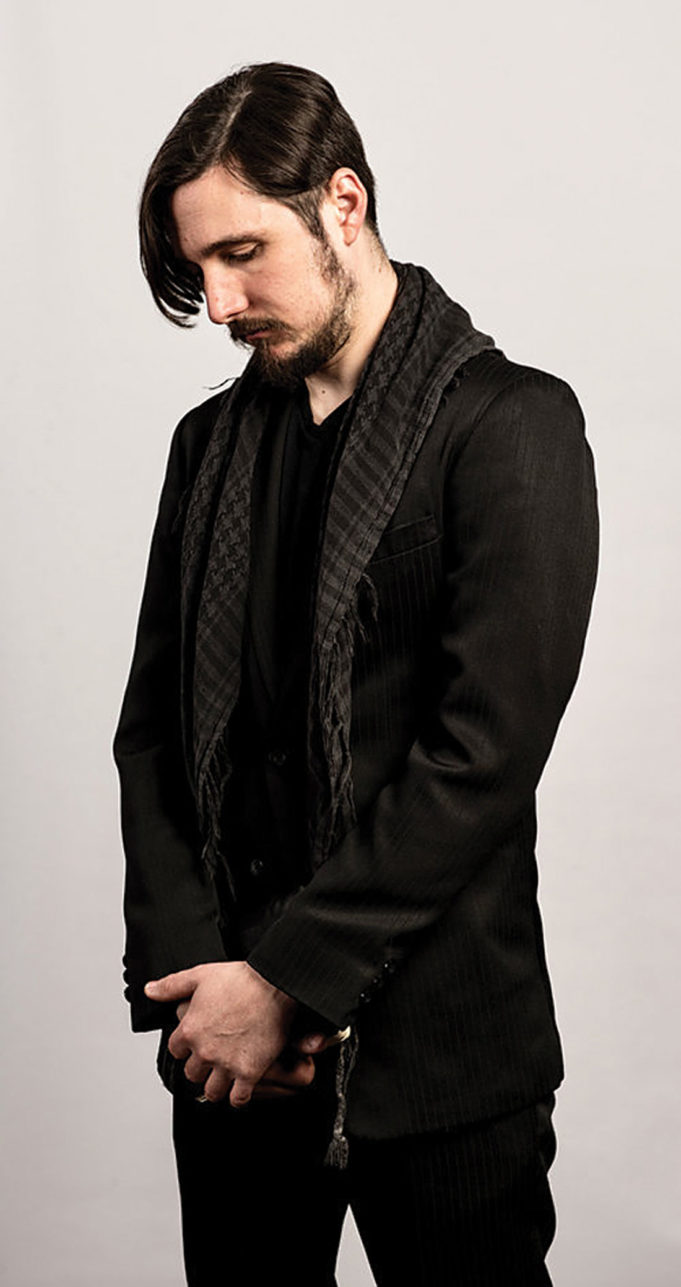James Talambas’ sound-driven installation artworks are largely what you’d expect from someone with a formal education in music composition and sound engineering who transitioned into the fine arts world. All of his pieces feature an element of sound, whether it’s ambient, driven by motion sensors, or an amalgam of spliced-up vocal recordings. But the sonic intermediaries are a means to a larger end — that of exploring how art can give insight into, and possibly mitigate, the symptoms of mental health afflictions.
Having an open conversation about panic attacks, depression, and compulsive thoughts (all of which Talambas said he is periodically stricken with) didn’t come easy to the Houston native. As someone close to Talambas who knows a bit of his past, I can say that he had a rougher childhood than most and has had to fight through recent and unexpected personal battles, too. Capturing those dark headspace moments through art has been a mental health boon, he said.
His artworks, he said, help him “work through those thoughts.” His compulsive thoughts “do decrease a little bit.”
Last February, Talambas presented two installations at the artist-run gallery 500X in Dallas which exemplify his ongoing search for healing through art. A solemn burial site, y o u c a n n o t b u r y m y s i l e n c e ., featured audio recordings that were slowed to the point of being indecipherable. The original recordings by Talambas detailed the events leading up to and after his then-recent breakup. Nearby, all i can do to hope from drowning consisted of several TV panels that encased viewers. The screens randomly flashed cartoonish avatars of Talambas along with audio clips of stingingly painful insults. The quotes came from dialogues in his head during past depressive episodes.
“I would write down all my anxious thoughts, my obsessive thoughts” in the weeks leading up to the show, he said. “These are things that I wouldn’t allow my friends to tell me, but I’m willing, somehow, to tell myself that.”
Manifesting inner ideations in a public space can be cathartic, but Talambas’ artistic ambitions go beyond helping himself. Each show is designed to bring some semblance of peace and restfulness to viewers while spurring open and honest conversations about mental health. Those discussions are often prompted by Talambas’ artist statements. Other times, simply experiencing his creations suffices.
At an ongoing show in Houston, as part of Sculpture Month Houston, Talambas was tasked with filling three grain silos with original work. He transformed the cement walls into resonators that droned and hummed at mid-level frequencies, inviting silent contemplation. One visitor told Talambas he spent half an hour in the artist’ silo, later saying that it was one of the most peaceful experiences he had had. In the same way that “social practice” is becoming the buzzword among the modern art cognoscenti as a term that rebukes the commercial aspects of paintings and sculptures, Talambas said he is happy to stay away from that other trend within the contemporary art world — art as spectacle. While his creations have therapeutic benefits, the new media artist is quick to note that he has zero interest in being “anyone’s therapist.”
Music therapy, he said, “has its place, but I think there is a special place for art” in addressing these issues.
Talambas is pretty busy at the moment. When he isn’t taking on ambitious multimedia projects, the Near Southside resident is recording and producing records, dee-jaying, and running live sound. He was recently awarded the Contemporary Art Dealers of Dallas 2018 CADD FUND award, an annual prize voted on by CADD members. The accolade comes with a commission for a publicly accessible artwork. Early to mid-2019 will see the unveiling of “BREATHE,” a meditative enclosed space that will be enveloped by lavender flowers. The soundscape, Talambas said, will be selected to induce beta waves, the pattern of neural oscillations in the human brain (25 to 100 hertz) that is believed to induce feelings of well-being.
“Hopefully, that will help people with anxiety,” he said. “I want to make it a restful place that’s readily accessible to people.”












